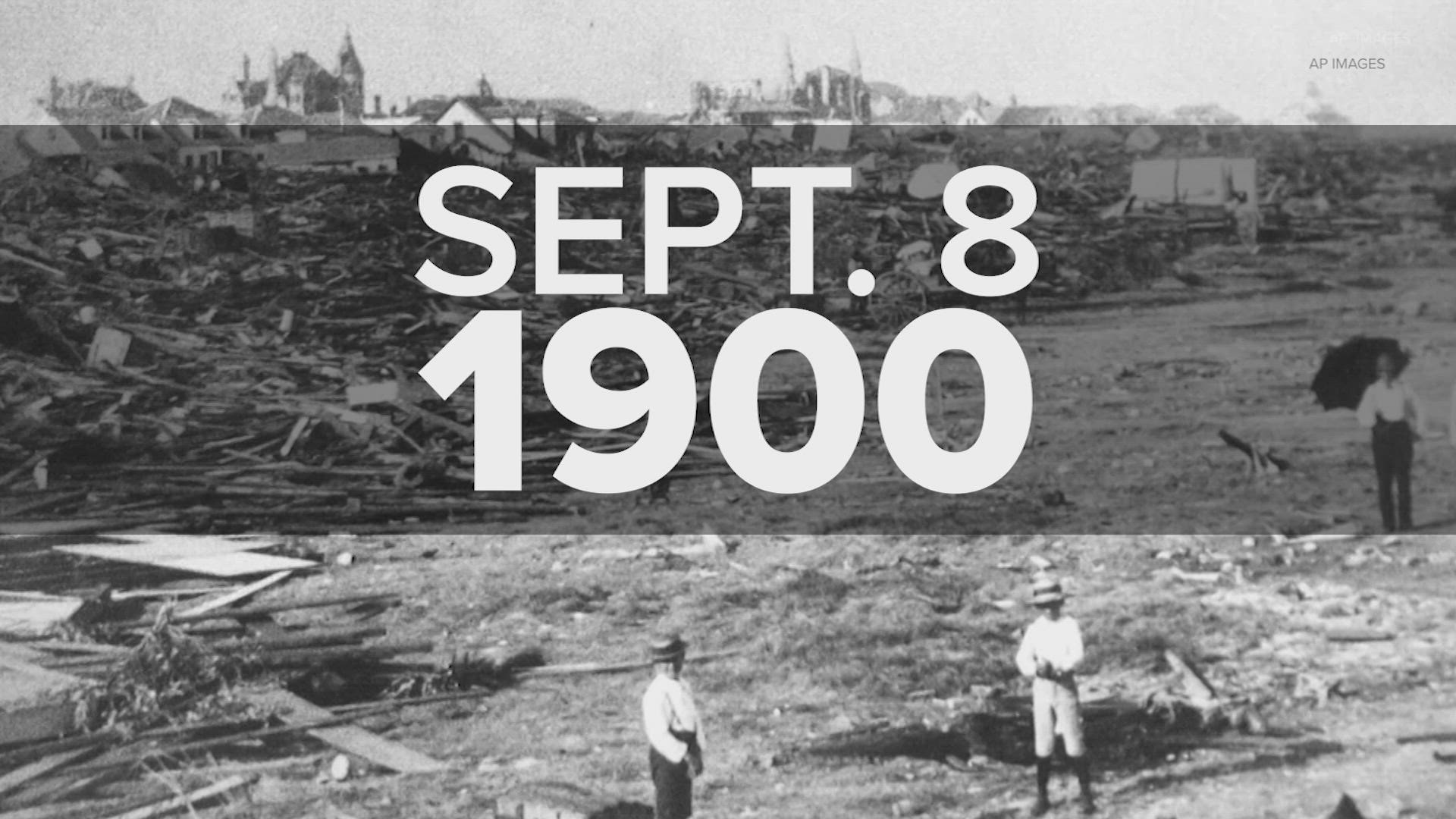GALVESTON, Texas — On Sept. 8, 1900, a massive hurricane swallowed up Galveston Island, claiming up to 12,000 lives and destroying more than 2,600 homes.
Acknowledged as the worst natural disaster in U.S. history, what we now call a Category 4 hurricane swept on shore on that Saturday evening. The storm surge covered the island in as much as 15 feet of water, leaving the city in ruins.
At the time, forecasters didn’t have the tools we have today, such as satellite imagery, radar or aircraft reconnaissance. The only communication came in the form of telegraphs from Cuba, alerting the Gulf Coast about approaching storms.
In 1900, Galveston was a wildly busy port town and the second-biggest entry point for immigrants to the U.S. The census done just months before documented a population of nearly 38,000. With no real warning system, the people of Galveston were sitting ducks.
Video shot by an assistant of Thomas Edison on one of only four cameras in existence shows the aftermath. Crews launched a stranded schooner from the docks, while the rest of the waterfront was littered with vessels wrecked by the storm. Rubble covered city streets, the remnants of buildings that had stood just the day before. Volunteers searched for bodies in the rubble.
One of the most heartbreaking stories -- and there were so many -- comes from the St. Mary’s Orphans Asylum. To keep the children from being carried away in the surge, the sisters tethered themselves to groups of the kids.
When the building collapsed, that trapped them all. Ten sisters and 90 children died. Only three boys survived.
The storm prompted a massive effort to protect the island. Construction on the 17-foot seawall began in 1902. It now stretches more than 10 miles.
Hurricane Ike proved more protection is needed. After the 2008 storm came the idea of the Ike Dike, a project extending the seawall, adding pumps and levees and building gates to close off the ship channel.
The estimated cost: $26.2 billion. That’s why experts say, a full decade after it was pitched, the idea is just an idea.
Still, when it comes to technology, warnings and protection, we are a long way from where were were when that storm hit in 1900.

